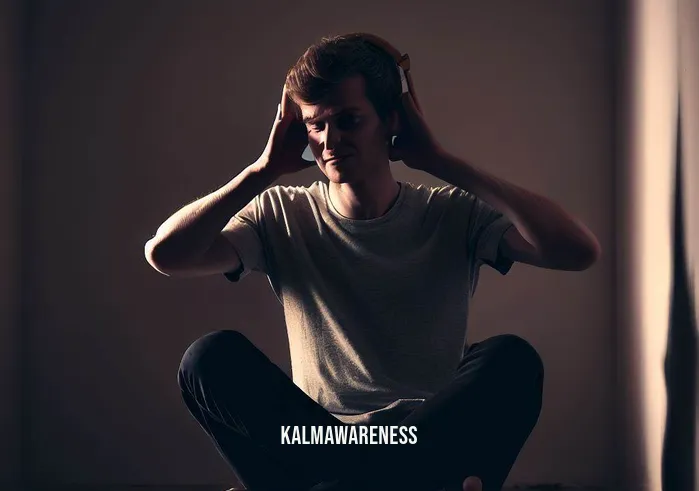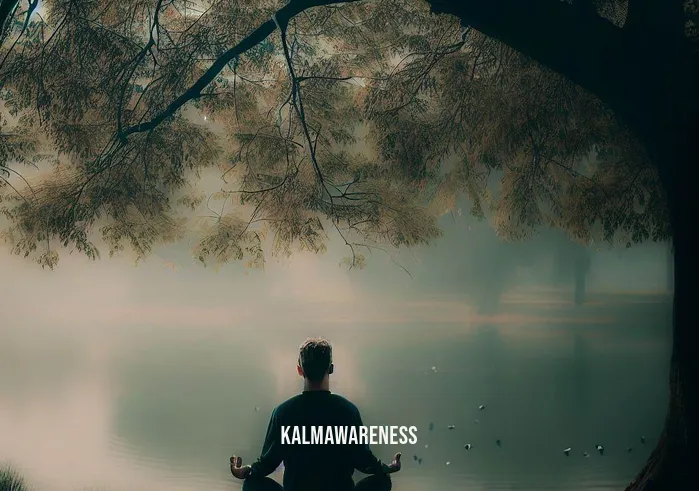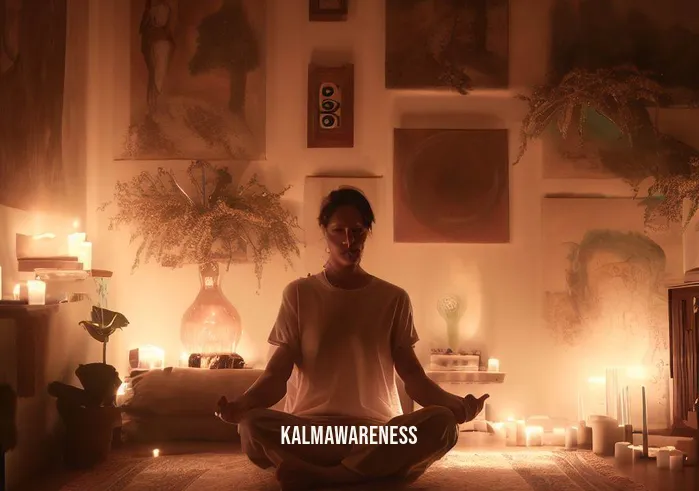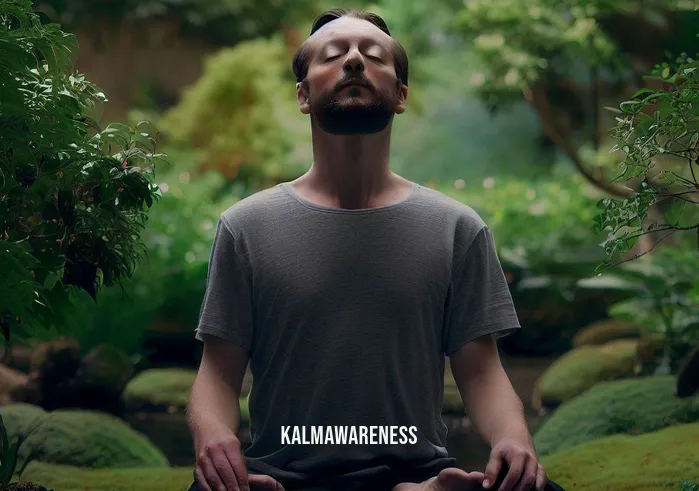Do You Have to Meditate in Silence? The Intricacies of Inner Stillness
The Ambiguity of Silence in Meditation Techniques
As meditation continues to permeate mainstream consciousness, one question often lingers: “Do you have to meditate in silence?” It’s a question that may come with certain assumptions about what constitutes a “proper” meditation session. In many instances, people associate meditation with complete silence, a tranquil setting, and a quest for inner stillness. However, is silence truly the only pathway to achieving mindfulness and tranquility?
What Does Silence Really Mean?
When we talk about meditation, the term “silence” often serves as a blanket word for various nuances of quietude. Silence can be auditory, involving no external noises, or it could be internal, referring to the stillness of mind. In some forms of meditation like Zen meditation with ambient sounds, the focus is not necessarily on silence but rather on presence.
The Assumed Link Between Silence and Breathing and Meditation
Traditionally, many meditation techniques emphasize deep, conscious breathing as an avenue to achieve inner stillness. There’s a pervasive notion that the best breathing and meditation practices must occur in complete silence. However, this isn’t universally true. In some cases, external sounds or guided instructions may actually enhance the quality of your meditation. Methods like Christian Yoga Nidra incorporate verbal cues or even hymns to assist in meditation, thus demonstrating that silence is not an absolute prerequisite.
The Variability of Meditation Practices
Meditation is a broad field with multiple approaches designed to suit different individuals. For instance:
- Channeling energy through meditation often involves visualization techniques and may incorporate sounds or spoken affirmations.
- Meditating in the dark focuses more on sensory deprivation rather than auditory silence to achieve mindfulness.
- DIY labyrinth meditation encourages movement and sensory engagement, suggesting an alternative to stationary, silent practices. You can learn to build your own labyrinth for meditation by following the guidelines on DIY Labyrinth.
“The first step to getting anywhere is deciding you’re not willing to stay where you are.“
— An Unknown Sage on Meditation
As you can see, the answer to whether you must meditate in silence is not straightforward. It largely depends on your personal preferences and what you aim to achieve through your mindfulness practice.
Embracing Inner and Outer Silence
It’s also vital to note that while external silence is not always necessary, the pursuit of inner silence — a state of mental quietude — remains central to most meditation practices. This form of silence often helps in the act of becoming aware through the senses, another crucial aspect of advanced mindfulness techniques.
Towards a More Comprehensive Understanding
So, do you have to meditate in silence? While silence can be a powerful tool, it’s not the only one in your mindfulness toolkit. Recognizing this offers a more inclusive, nuanced understanding of how to achieve a meditative state, whether through silence, guided meditation, or sensory practices.
As we delve deeper into the complexities of various meditation techniques, in the next segment, we will explore the science behind these practices and how they affect our emotional and mental states. This will include a discussion on techniques like how to sit with emotions during meditation, and we will also explore other alternatives that do not strictly require silence.
Curious to discover more? Continue reading.

The Science and Variability of Silence in Meditation
Unpacking the Neuroscience: Is Silence Golden?
The question of whether you have to meditate in silence touches on the fascinating intersection of neuroscience and mindfulness practice. Various scientific studies have looked into the effects of silence on the brain and have yielded intriguing results. However, the outcomes are not so black and white, as silence can be both beneficial and non-essential depending on the individual and the meditation technique.
Sound and Cognitive Functions
Contrary to the idea that silence is the only path, certain ambient sounds or mantras have been found to facilitate concentration. Such is the case with presence meditation, which allows for a certain level of auditory engagement to keep the practitioner anchored in the present moment.
Silence vs. Sound: A Comparative Table
| Aspect | Silence in Meditation | Sound in Meditation |
|---|---|---|
| Focus | Promotes internal reflection | May facilitate external mindfulness |
| Stress Relief | May lower cortisol levels | Soundscapes like ocean waves can also reduce stress |
| Versatility | Suited for introspective practices like Body Scan | Useful in practices like Rising Higher Meditation with ambient sounds |
| Accessibility | Requires quiet environments | Can be adapted to noisy surroundings |
| Inclusivity | Might not suit individuals with auditory sensitivities | Offers options like Christian Yoga Nidra for diverse groups |
Unconventional Paths to Mindfulness
As we explore the alternatives to silent meditation, it’s essential to understand the myriad ways to achieve a state of mindfulness:
- Challenges: Sometimes a specific challenge is posed to focus your meditation. For example, you might meditate on a particular subject or idea.
- Cognitive Techniques: Strategies like stopping negative thinking through meditation don’t necessarily require silence but do demand a level of concentration.
- Community: Engaging in group activities or joining a mindful collective can also serve as a form of meditation.
- Gratitude Practices: Exercises like mindful gratitude engage your emotions and thoughts, offering a distinct route to mindfulness.
The Emotional Aspect: When to Sit with Your Emotions
Understanding when to embrace or let go of silence in your meditation practice can also significantly affect your emotional state. For those who struggle with emotional regulation, techniques that teach you how to sit with your emotions can be particularly beneficial and do not always necessitate complete silence.
Breaking Stereotypes: Mindfulness Beyond Silence
The overarching message here is that the world of meditation is vast and multi-faceted. The question “do you have to meditate in silence” finds its answer not in absolutes but in personal preferences, individual circumstances, and the specific goals one has for their mindfulness practice.
“The quieter you become, the more you can hear. But also remember, the more you listen, the more you can understand—even in the noise.“
— An Interpretation of Mindfulness Wisdom
The mindfulness journey is unique for each individual, and while the quietude may offer a direct route to inner peace for some, others may find solace and clarity in the noise or guided interactions.
In our next segment, we will shift our focus to explore how different cultures and philosophies approach the question of silence in meditation. We’ll look into the historical evolution of meditation techniques, including how ancient wisdom and modern science blend to answer our pressing query: Do you have to meditate in silence? Intrigued? Continue reading.

The Symphony of Silence and Sound: Finding Hope in Meditation
The Inspirational Role of Silence and Its Alternatives
The question “Do you have to meditate in silence?” goes beyond mere technique or individual preference. It’s a query that could influence your emotional and spiritual well-being. As we journey through the realms of mindfulness and meditation, it becomes abundantly clear that inspiration can be found both in silence and in its absence.
“In the silence of the heart, God speaks. If you face God in prayer and silence, God will speak to you.”
— Mother Teresa
Silence as a Canvas
In practices like Resting Meditation, the emphasis on silence serves as a blank canvas that allows your thoughts and emotions to manifest freely. The idea isn’t to empty your mind but to become an observer, an active participant in your own internal dialogue.
Sound as a Catalyst
On the other end of the spectrum, we find inspiration in practices that incorporate sound or spoken word. For example, in Bob Stahl’s mindfulness methods, the focus often lies in guided meditations, affirmations, or specific chants that guide the practitioner.
“Sometimes, it takes a noisy, disordered environment to make us understand the value of silence.”
— Robert L. Jetter
The Transformational Potential of Non-Silent Approaches
Whether you choose to meditate in silence or prefer methods that include sound or guidance, both approaches have their own transformational potential.
- Personal Relevance: If silence doesn’t resonate with you, techniques like Beyond the Elements Reactions worksheet can help you explore your emotional responses in a structured manner.
- Self-Acceptance: Practices such as Rise Up, Take a Breath encourage you to accept your present state, whatever it may be, as a starting point for growth.
“Do not let the behavior of others destroy your inner peace.”
— Dalai Lama
Cultural Interpretations: Where Silence Meets Sound
Many traditional practices around the world integrate both silence and sound into their meditative techniques. In some forms of meditation, like in Christian Yoga Nidra, silence and sound coexist, proving that the question of whether one must meditate in silence is not universally agreed upon even in ancient wisdom traditions.
“Your value does not decrease based on someone’s inability to see your worth.”
— Unknown
A Note of Hope: The Choice Is Yours
The bottom line is, whether you opt for silent meditation or a practice that includes sound, both roads can lead to mindfulness, emotional well-being, and a deeper understanding of yourself. The inspirational aspect of this is the freedom to choose your path, to tailor your practice in a way that resonates most closely with your emotional and spiritual inclinations.
What Lies Ahead: The Malleability of Mindfulness
As we move forward, we will delve into the adaptable nature of meditation techniques, highlighting the inherent flexibility of mindfulness practices. We’ll look into the concept of “adaptive mindfulness” and discuss how modern adaptations like Mindful Gratitude or the Mindful Collective make it increasingly accessible for everyone to find their ideal meditative approach.
Ready to explore the myriad ways in which mindfulness can adapt to your lifestyle and needs? Continue reading.

Silence or Symphony: Decoding the Multitudes Within the Meditation Experience
Dismantling the Myths: Is Silence Golden?
The dialogue surrounding whether one must meditate in silence has resulted in a myriad of perspectives, each worth examining. In this chapter, we break down some of the prevailing thoughts, supported by practices and techniques that offer alternatives to the conventional wisdom about silence in meditation.
The Silence Spectrum
- Absolute Silence: This involves completely quiet settings, often endorsed by proponents of DIY Labyrinth methods, where even footfalls are considered distractions.
- Relative Silence: Here, background noises exist but are not focused on during meditation. Practices like Body Scan Worksheet use this kind of silence.
- Silence with Intent: Some approaches utilize moments of silence purposefully placed between sounds or words, as found in Presence Meditation.
Sound and its Various Forms
- Guided Meditation: Where a voice leads you through a scenario or thought process.
- Music or Ambient Noise: Such as the sounds of nature, or the specially designed tracks in Rising Higher Meditation Zen Ambient.
- Mantra-Based: Chanting or repetition of phrases, words, or sounds, usually in a rhythmic pattern.
A Diverse Array of Approaches
Here’s where the debate around “Do you have to meditate in silence?” becomes truly fascinating. There are multiple avenues to achieving a meditative state, each offering its own unique benefits.
Methods that Prioritize Silence
- Vipassana: Focuses on breath and sensation, demanding an environment as quiet as possible.
- Zen: Here, the emphasis is often on quietude, supporting introspection.
Techniques that Incorporate Sound
- Kundalini: Utilizes the chanting of mantras as an integral part of the practice.
- Tibetan Singing Bowl Meditation: Leverages the vibrational power of sounds.
Practices that Blend Both
- Mindfulness Meditation: May incorporate periods of silence punctuated by guided prompts, as outlined in Practicing Mindfulness Book.
- Transcendental Meditation: Starts with chanting but eventually leads to silence.
How to Choose? Addressing Individual Preferences
Selecting between silent and sound-infused meditation methods is not a binary choice. Rather, it’s about aligning your practice with your emotional and mental needs, as shown by techniques that help in Stopping Negative Thinking.
- Introverted Personality: You might find solace in quieter forms.
- Extroverted Personality: May enjoy the communal energy of chanting or guided sessions.
- Situational: Your preference might change based on your emotional state, as addressed in How to Sit with Emotions.
Convergence and Divergence: Teasing the Final Chapter
We’ve explored various facets of the central question, enriching our understanding of the role of silence in meditation. Yet, some may still be wondering how these diverse paths intersect and diverge, and how they can be tailored to individual needs and contexts.
In the final chapter, we will be tying these strands together. Are there overarching principles that can guide us regardless of our chosen approach? How can we navigate the myriad of options to find our unique path in the world of mindfulness?
Prepare to uncover these answers and more. Continue reading for the final revelation.

The Harmonious Symphony of Silence and Sound: A Refreshing Conclusion
Wrapping Up Our Sonic Exploration
As we reach the end of this engaging journey through the realms of silence, sound, and everything in between, it’s important to pause and reflect. We’ve explored multiple dimensions of the big question: Do you have to meditate in silence? We’ve seen that the answer isn’t a straightforward “yes” or “no.” Instead, it involves a nuanced tapestry of personal preference, emotional needs, and the specific goals one aims to achieve through Mindful Gratitude, Beyond the Elements Reactions Worksheet, or Christian Yoga Nidra.
Nuggets of Wisdom: The Quiet and the Cadence
- Personal Choice Reigns Supreme: Whether you’re aiming for inner tranquility or a heightened state of awareness, the method is secondary to the intention.
- Dynamic Nature of Needs: Our emotional and spiritual needs are fluid; thus, so should our approach to meditation be.
- Inclusivity Over Exclusivity: The world of mindfulness is expansive, inviting everyone to partake in its Mindful Collective—regardless of their affinity for silence or sound.
Adding Color to Our Silence: The Fun Side
Who knew that a topic like “Do you have to meditate in silence?” could be so multi-faceted and entertaining? From Rise Up, Take a Breath moments to sinking into Resting Meditation, the scope for exploration is truly endless. Think of it as a buffet of experiences; you’re free to go back for seconds, thirds, or even switch plates entirely!
Your Next Steps: An Invitation to Dive Deeper
We’re thrilled you’ve been with us for this exploration, and we encourage you to revisit earlier chapters for a fresh perspective. Feel like a challenge? Why not delve into the question of How to Meditate On… something entirely different! We’re all about encouraging you to take that extra step into the fascinating world of mindfulness, soundscapes, and yes, the transformative power of silence too.
Thank You for Tuning In: Until Next Time
As we bring the curtain down on this edition, we’re immensely thankful for your company. Your journey through the complex landscape of silence and sound in meditation is a testament to your dedication to personal growth and well-being. Rest assured, we’ll be back with more in-depth insights, challenges, and heart-warming stories of transformation.
Ready for more? Continue reading our other insightful articles, and join us as we embark on yet another enlightening journey. Until then, may your meditative experiences—silent or otherwise—be as enriching as the symphony of life itself.
Keep exploring, keep questioning, and above all, keep meditating!



